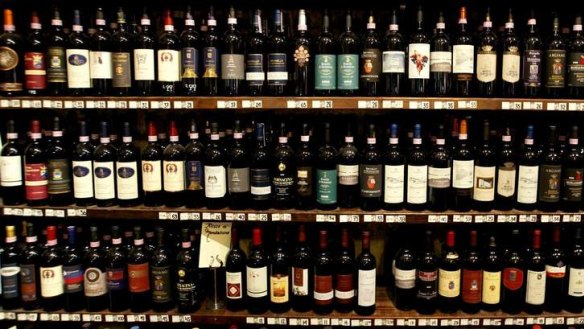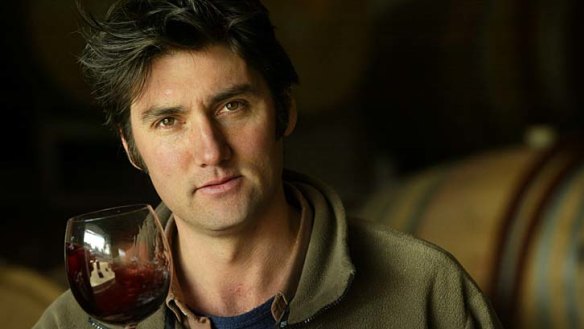Doing things by halves has its perks
While a little on the costly side, there's a new happy medium between bottle and glass.

Had enough of chancing wine by the glass in restaurants? Tired of finding stale wine in your glass, poured from a bottle opened three days ago? Or maybe you don't even get that far, because there's nothing on the by-the-glass wine list you want to drink?
Join the club. If there are just two of you dining, and you want to drink moderately, by the glass is a good option - in theory.
But what about half-bottles? They seem an underutilised option.

Recently, restaurateur Lou Perri of The Stunned Mullet in Port Macquarie came to me with a beef: he reckons the judges of Australia's Wine List of the Year Awards penalised him for not having enough wines by the glass (just two bubblies, two whites and two reds). He pointed out that he had a very good list of half-bottles, reasonably priced. He said he'd rather serve people good wine by the half-bottle than the stale or low-grade stuff many restaurants serve by the glass.
It's hard to disagree. Perri has 35 well-chosen half-bottles on his 180-wine list.
But you'll go a long way to find a restaurant with a good list of half-bottles - other than a luxury establishment such as Sepia or Quay.
Wine wholesaler James Johnston of World Wine Estates is a big fan of half-bottles. ''Couples who want to try something more expensive than by-the-glass wine can buy a couple of halves,'' he says. ''My wife and I do that all the time. We're willing to spend more than the usual price of a glass, but we don't want the volume of a 750-millilitre bottle.'' As an importer, Johnston always orders halves from the European wineries he deals with, if they're available. ''It's a brilliant way to sell wine,'' he says. ''From the producer's viewpoint, it's an extra way to get your wine on a list.''
Producers of high-value wines should offer halves because people who want to try their wines might baulk at buying a full bottle but may decide they can afford a half. And Johnston says the potential growth in sales of halves is limited, not by demand, but by the number of wineries that produce them.
Perusing any great wine list, you often see the same names in the half-bottle section: Mount Mary, Rockford, Curly Flat, Bass Phillip, Kumeu River, Craiglee.
These are all high-value producers. Their halves aren't cheap, but they're more affordable than their fulls.
Sam Middleton, winemaker for the iconic Yarra Valley vineyard Mount Mary, says he is surprised more wineries don't produce halves. He says Mount Mary has historically placed importance on halves. All of its varieties are bottled in halves as well as fulls, representing about 10 per cent of output. Buyers are mainly restaurants - and mailing-list clients, since Mount Mary began offering halves to its mailing list in 2006.
''We've always had strong interest in the trade,'' Middleton says. ''Halves are popular with people dining in couples. Ours are higher-priced wines, so they're more economical to buy in halves.''
An obvious advantage of half-bottles, according to Jon Osbeiston of Vintage Cellars Ultimo, is that people dining in couples or small groups can try more than one wine with their meal, ''instead of getting stuck with one bottle for the entire meal''. It's especially appropriate if diners want a white with their entree and a red with their main.
Ultimo has always had a strong suit in half-bottles. ''I'm not a big drinker, so I always like halves myself,'' Osbeiston says. ''To me, the perfect way to start a meal is a half of white burgundy. The only problem with that is that most burgundies still have corks.''
However, several chablis producers ares using screw caps on halves, including Louis Moreau and Domaine Laroche.
Increasing numbers of other European whites are under screw cap, too. Johnston imports the Alsace whites of Albert Mann, which makes screw-capped halves. I've also bought screw-capped halves of Valminor Albarino from Five Way Cellars in Paddington - a shop that's surrounded by eating places, so no surprise that it keeps plenty of half-bottles.
Of course, you will usually pay more for a half-bottle than the equivalent volume of wine by the glass. There are two reasons for that. First is that half-bottles are more expensive whether you buy them at a winery, shop or restaurant. But also, the wine is likely to be of higher quality. By-the-glass wine is usually a budget option.
Why do halves always cost more than half the price of a 750-millilitre bottle? Middleton says Mount Mary wines that cost $100 for a 750-millilitre bottle are $60 in 375 millilitres.
The answer is the cost. The cost of the bottle, label, screw cap or cork and capsule is more than simply half the cost of a bottle of twice the capacity. And the winemaker must buy twice as much packaging to sell the same volume of wine. As well, Bindi winemaker Michael Dhillon says, the cost of setting up the bottling line for halves is significant, as is the extra time needed to do the fiddly job of filling, sealing and packing half-bottles.
Middleton sounds a word of warning, though, to people who might be thinking of cellaring half-bottles. ''We try to educate people that halves don't age the same way as 750-millilitre bottles. The wine ages far more quickly. However, most buyers tend to drink them relatively early [as they should].''
Perhaps half-bottle mania is catching: Bellevue Hill Bottle Shop now has a specialist online retail site: halfbottles.com.au. As you might expect, there are many halves of sweet wines, 375 millilitres being the preferred size for ''sticky'' whites such as botrytis semillon.
There are also 187-millilitre quarter-bottles, which tend to be mostly cheapies such as Jacob's Creek, Oxford Landing and Yellow Tail. Another option is a piccolo of champagne, if that's your desire - although I don't know anybody who wants so little champagne!
As if to wet your whistle, the opening page of reds starts with a 375-millilitre Domaine Armand Rousseau '08 Gevrey-Chambertin. Mmmmm. Yes please!
huonhooke.com
Restaurants with good half-bottle selections
Jonah's, Sepia, Quay, Rockpool Bar & Grill.
Retailers with good half-bottle ranges
Vintage Cellars Ultimo, Five Way Cellars, Bellevue Hill Bottle Shop, Cremorne Cellars.
